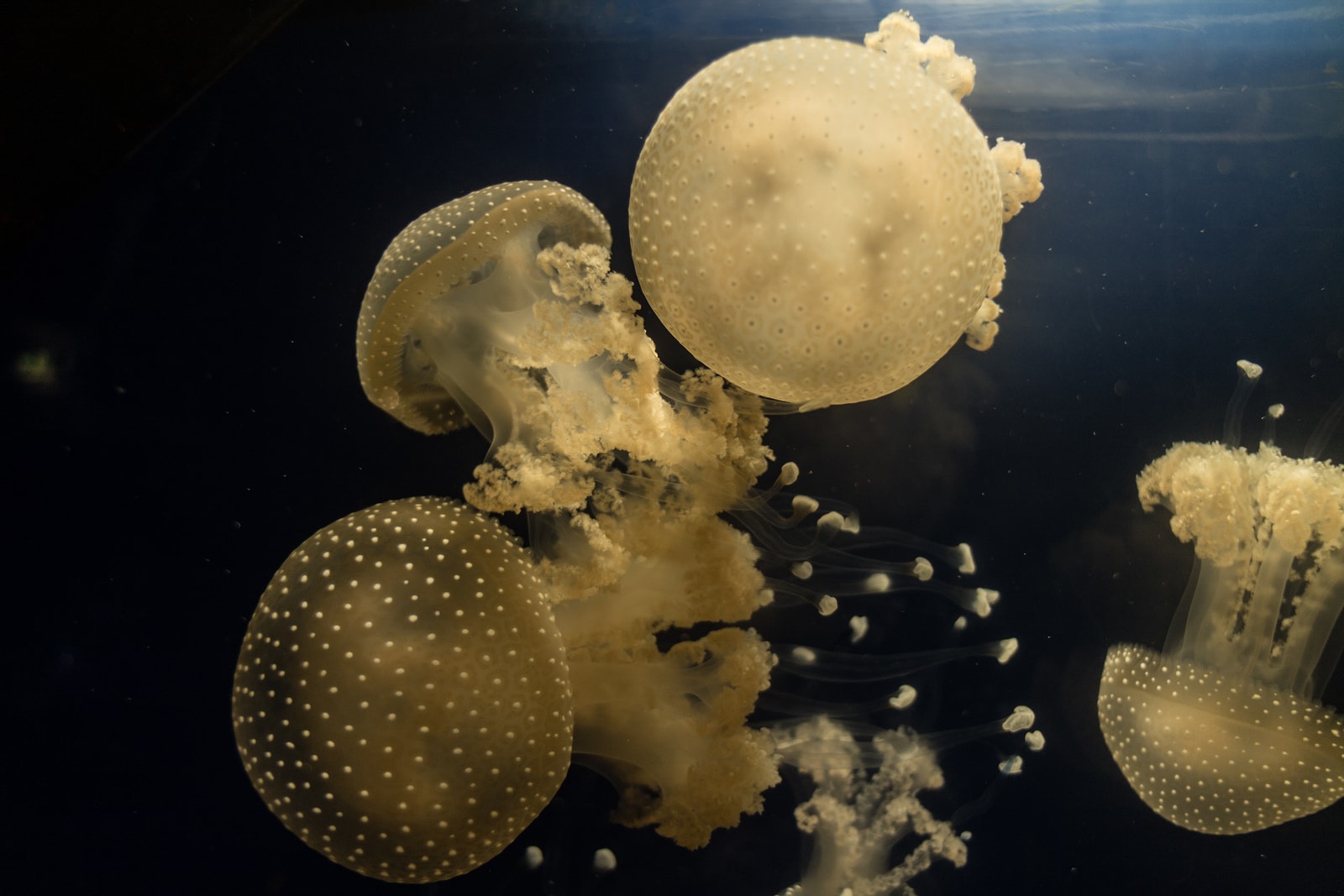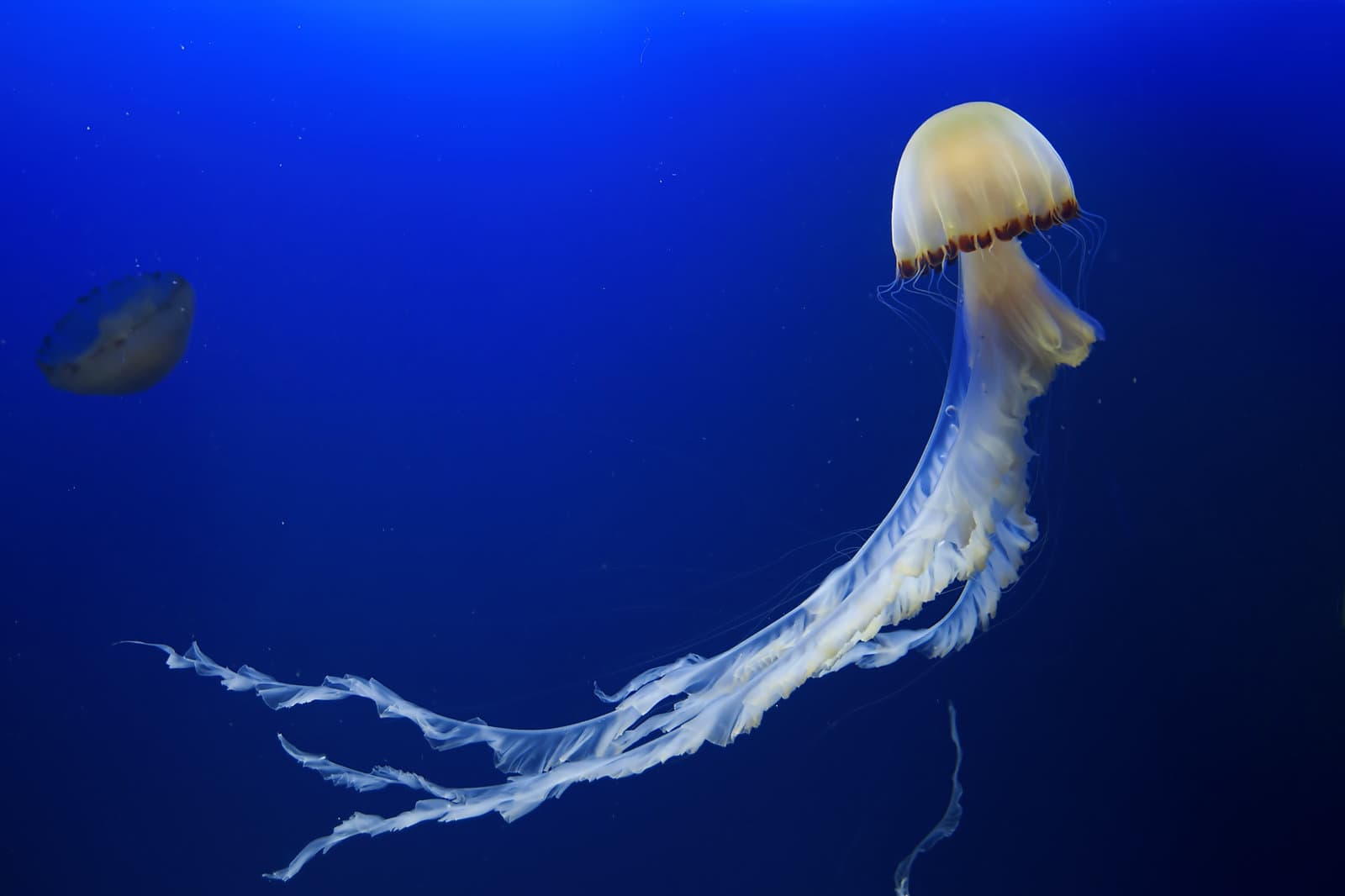Jellyfish are one of the most interesting creatures on the planet. Most of the oceans contain jellyfish, and the jellyfish is one of the oldest types of Animalia that we have classified on the planet so far.
Here are some of the most important and fun facts about jellyfish for kids.
 Is a Jellyfish a Fish?
Is a Jellyfish a Fish?
Nope!
The first term that scientists use to classify jellyfish is Animalia.
We use the term Animalia first in the scientific names of jellyfish, because they are considered a type of animal.
The second group name that scientists use to classify most jellyfish types is the term Cnidaria.
Even though the word “fish” appears in their name, it’s a myth that they are a type of fish. Fish have bones, where jellyfish (that are a type of invertebrate) don’t have any bones in their entire bodies.
The general term “jellyfish” is an extremely vast term that includes more than 2, 000 different types of animals that we classify under this name.
Scientists say that the sea creatures we know as jellyfish have been with us for millions of years. It makes them one of the oldest developed creatures we have in the world’s oceans.
Some of the jellyfish types out there includes the Portuguese Man-o-War and the Crown Jellyfish.
Never try to touch a jellyfish if you spot one. Some jellyfish can be extremely poisonous, even when their bodies have washed up somewhere.
Oh, and if you have ever wanted to know, a group of jellyfish together is called a smack of jellyfish.
Where Do Jellyfish Live?
Jellyfish live in most of the world’s oceans.
The thousands of different jellyfish species we have occupy the world’s oceans.
Most of the oceans in the world have their own jellyfish species, and the jellyfish is considered one of the most prevalent marine life types.
Jellyfish easily adapt to different habitats, temperatures or conditions. Scientists are studying jellyfish specifically for their ability to adapt well in different environments – and modern studies say that this is why jellyfish live so well everywhere.
Of course, not all jellyfish are in the world’s oceans.
There are some people who keep jellyfish as exotic pets, and many zoos in the world are home to jellyfish which are there so they can be observed and studied by scientists.
Do Jellyfish Have Eyes?
Jellyfish don’t have eyes like fish or mammals do, but they can still see through eyespots.
Even though jellyfish don’t have eyes like other fish or mammals, most jellyfish types have sensors located throughout the “domes” that make up their bodies.
These sensors, called eyespots, help jellyfish to sense changes in light – and most types of jellyfish know exactly where they’re going when they’re under the water.
It’s a misconception that jellyfish are blind, and their sensors help them to see and hunt in almost every type of underwater environment.
Their keen sense have helped jellyfish to escape predators for millions of years.
What Do Jellyfish Eat?
Jellyfish have a varied diet that consists of many smaller creatures and plants found in the ocean.
Most jellyfish types out there are considered carnivores, and their diet consists of smaller fish and creatures like plankton that they find in their natural environment. Jellyfish will also sometimes consume plants, and the eggs of other fish when they can find it.
In nature, jellyfish will eat what they can find around them, and some jellyfish species use their venom to paralyze their prey.
Jellyfish that are kept in captivity will eat a careful diet provided to them by their owner, and it might include things like krill and brine shrimp.
Do Jellyfish Have Brains?
Jellyfish don’t have a brain like fish or mammals do, but instead they use a system of nerves throughout their bodies.
Jellyfish don’t have any brains – and this isn’t an insult, but a physical fact.
Instead of brains like we would see with fish or mammals, jellyfish rely on a nervous system to feel and process.
While insects, animals and people have their brains right at the top of their heads, you can think of a jellyfish as a type of animal that has little bits of brain running throughout its body.
Technically, a jellyfish thinks with their entire being, with their nerves all over the place like a big “net” inside their bodies.
Jellyfish are not the only animal that lacks a brain. Some types of anemone and oysters also rely on a nervous system to think rather than a brain made of flesh, fluid and fats.
Do Jellyfish Feel Pain?
Yes, jellyfish can feel pain just like any other animal, although the way pain is processed for jellyfish is still being studied by science.
Jellyfish are one of the most interesting animals we share the world’s oceans with, and they can feel pain just like any other animal out there that has a brain or nervous system.
While science says that jellyfish cannot process complicated emotions like sadness or joy, we know that most jellyfish types can still feel pain as part of their nervous system.
It has long been believed that jellyfish cannot feel pain at all, but this is considered a misconception and it’s accepted now that jellyfish feel pain (and just not in the same way as mammals might imagine it).
Do Jellyfish Have Blood?
No, jellyfish are one of the few animals that don’t need a brain, heart or blood in their bodies to function.
One of the things that sets a jellyfish apart from other animals is the fact that they don’t need any blood in their bodies to survive. Instead, jellyfish are made out of 95% water, while the rest of their bodies are comprised of different parts and minerals.
Because of this, jellyfish also don’t have a heart like fish or mammals do… Jellyfish don’t need it!
Jellyfish don’t have blood, but their bodies also work in such a way that they don’t need blood or hearts in order to function.









